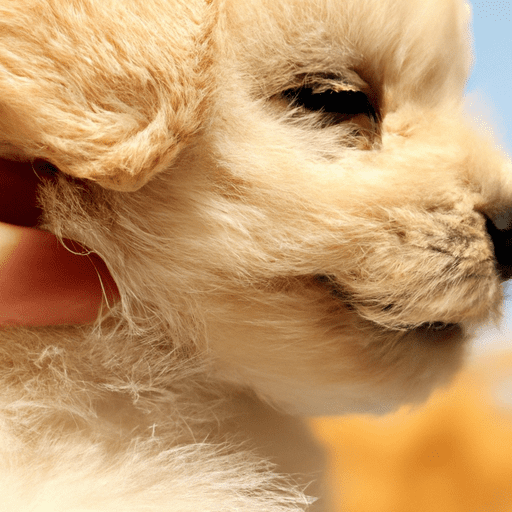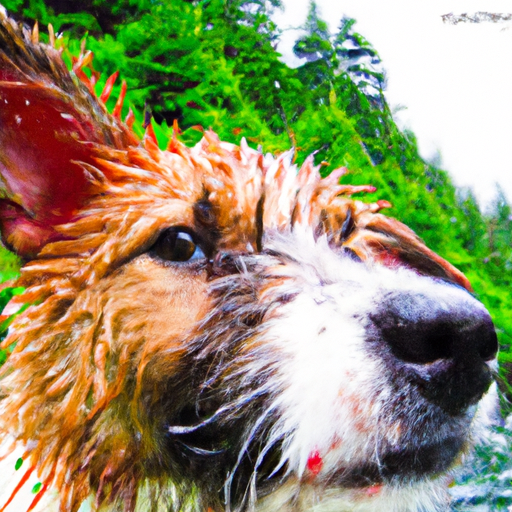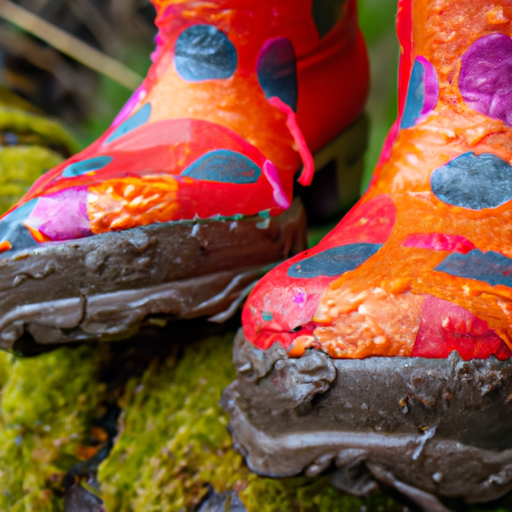If you've ever wondered how to keep your furry friend safe from those pesky little critters, look no further. In this article, we'll explore some simple and effective methods for preventing fleas and ticks on your precious puppy. So say goodbye to incessant scratching and say hello to a happy and itch-free pup.
Importance of Preventing Fleas and Ticks
As a responsible puppy owner, it is crucial to prioritize the prevention of fleas and ticks. These small parasites may seem harmless, but they can pose serious dangers to your furry friend's health and well-being. Fleas and ticks not only cause discomfort for your puppy but can also transmit diseases and lead to various health risks. By taking proactive steps to prevent fleas and ticks, you can ensure the optimal health and happiness of your beloved pet.
Dangers of Fleas and Ticks
Fleas and ticks are more than just nuisances that cause itching and irritation. These pests can transmit a range of diseases and infections to your puppy. Fleas, for instance, can transmit tapeworms, which are intestinal parasites that can cause weight loss, lethargy, and digestive issues in dogs. Additionally, some puppies may develop an allergic reaction to flea saliva, resulting in intense itching and discomfort.
Ticks pose an even greater danger as they can transmit serious illnesses, such as Lyme disease, ehrlichiosis, and Rocky Mountain spotted fever. These diseases can cause symptoms ranging from fatigue and joint pain to fever and organ damage. In severe cases, tick-borne illnesses can be life-threatening for your puppy. Therefore, preventing flea and tick infestations is crucial to safeguarding your puppy's health.
Health Risks for Puppies
Puppies are particularly vulnerable to the health risks associated with fleas and ticks. Their immune systems are still developing, making them more susceptible to diseases and infections. Flea and tick infestations can cause severe anemia in puppies, leading to weakness, pale gums, and even death if left untreated. In some cases, tick paralysis can also occur, resulting in loss of muscle control and difficulty breathing.
Furthermore, puppies often explore their surroundings eagerly, increasing their chances of coming into contact with fleas and ticks. Their small size makes it easier for these parasites to attach themselves to their bodies and hide in their fur. By taking the necessary preventive measures, you can protect your puppy from these health risks and ensure their well-being as they grow and develop.
Regular Grooming and Checking for Fleas and Ticks
Regular grooming and thorough inspections of your puppy's coat are essential in preventing flea and tick infestations. By establishing a routine and following some simple steps, you can effectively keep these parasites at bay and maintain your puppy's hygiene.
Brushing Your Puppy Regularly
Brushing your puppy's coat regularly serves several purposes. Not only does it help keep their fur clean and free from dirt and debris, but it also aids in the detection of fleas and ticks. During the brushing process, pay close attention to any signs of these parasites, such as small black dots or tiny crawling creatures.
Using a soft-bristle brush or a grooming comb specifically designed for puppies, gently run it through your puppy's fur. Focus on areas where fleas and ticks are more likely to hide, such as the neck, ears, armpits, groin, and the base of the tail. Regular brushing will not only help remove any existing parasites but also prevent their multiplication.
Inspecting Your Puppy's Coat
Regular inspections of your puppy's coat are crucial to catch fleas and ticks early before they have a chance to establish an infestation. Take the time to carefully examine your puppy's fur, parting it to expose the skin underneath. Look for any signs of flea dirt, which appears as small black specks resembling pepper.
Ticks may appear as small, dark bumps on the skin, and their bodies may become engorged after feeding on your puppy's blood. Be thorough in your inspection to ensure you don't miss any parasites. Remember that ticks can be as small as a poppy seed, so pay extra attention to detail.
Using a Flea Comb
In addition to regular brushing, using a flea comb is an effective way to remove fleas and ticks from your puppy's coat. This specialized comb has fine teeth designed to trap and remove these parasites. Before using the flea comb, make sure your puppy's fur is dry and free from tangles.
Starting at the head, gently comb through your puppy's fur, paying close attention to areas where fleas and ticks are commonly found. After each stroke, inspect the comb for any signs of these parasites. If you spot any, immediately dip the comb into a bowl of soapy water to drown and kill the fleas or ticks.
By incorporating regular grooming and thorough inspections into your puppy's routine, you can minimize the risks of fleas and ticks and keep your furry friend healthy and happy.
Bathing and Shampooing
Bathing your puppy is not only an essential part of their hygiene but also an effective way to prevent fleas and ticks. Proper bathing techniques, the right choice of shampoo, and consistency in frequency are key factors in keeping these parasites at bay.
Choosing the Right Shampoo
When it comes to preventing fleas and ticks, choosing a shampoo specifically formulated for this purpose is crucial. Look for shampoos that contain active ingredients such as pyrethrin or permethrin, as they are effective in killing and repelling these parasites. Be sure to read the instructions carefully and follow them accordingly.
Avoid using human shampoos or harsh chemicals on your puppy, as they can be harmful to their delicate skin and coat. Consult with your veterinarian to determine the best shampoo for your puppy's specific needs.
Frequency of Bathing
The frequency of bathing your puppy depends on several factors, including their age, activity level, and lifestyle. In general, bathing once every 2-4 weeks is sufficient to maintain cleanliness and prevent fleas and ticks. However, if your puppy spends a lot of time outdoors or frequently engages in activities that expose them to these parasites, more frequent bathing may be necessary.
Keep in mind that over-bathing can strip your puppy's skin of natural oils and cause dryness and irritation. Always use lukewarm water and ensure your puppy is thoroughly rinsed to prevent any residue from remaining on their skin.
Proper Bathing Techniques
Proper bathing techniques are essential to ensure an effective and safe process for your puppy. Start by preparing everything you need before bringing your puppy into the bathing area. Gather towels, shampoo, a non-slip mat or surface, and a gentle brush or comb.
Begin by gently wetting your puppy's coat with warm water, avoiding their face and ears. Dilute the shampoo as per the instructions and apply it evenly, lathering it gently into their fur. Take care not to get any shampoo in their eyes or ears, as it can cause discomfort.
Thoroughly rinse your puppy, removing all traces of shampoo. Use your fingers or a comb to detangle any knots gently. After the bath, carefully dry your puppy with a towel, ensuring they are warm and comfortable.
By following the proper bathing techniques and using the right shampoo, you can keep your puppy clean and free from fleas and ticks, promoting their overall well-being.
Oral Preventive Medications
Oral preventive medications are an effective and convenient way to protect your puppy from fleas and ticks. These medications come in the form of pills or chewable tablets, making administration relatively easy. Consulting with a veterinarian and understanding the different types, administration methods, and dosages are important steps in utilizing oral preventive medications.
Types of Oral Preventive Medications
There are several types of oral preventive medications available for puppies, each with its own mode of action. Some medications work by disrupting the flea and tick life cycle, preventing their eggs from hatching or larvae from maturing. Others target the nervous system of these parasites, causing paralysis and ultimately death.
Common active ingredients in oral preventive medications include spinosad, afoxolaner, and lufenuron, among others. It is essential to consult with your veterinarian to determine the most suitable medication for your puppy based on their age, weight, health condition, and any existing infestations.
Consulting with a Veterinarian
When considering oral preventive medications for your puppy, it is crucial to consult with a veterinarian. They will perform a thorough health examination and assess your puppy's specific needs. The veterinarian will take into account factors such as your puppy's age, weight, and any existing medical conditions to prescribe the most appropriate medication and dosage.
Your veterinarian can also provide guidance on the proper administration of the medication and address any concerns or questions you may have. They will monitor your puppy's response to the medication and recommend any necessary adjustments to the dosage or treatment plan.
Administration and Dosage
Administering oral preventive medications correctly is essential to ensure their effectiveness and safety for your puppy. Pills or chewable tablets should be given as per the veterinarian's instructions. Some medications are administered once a month, while others may require more frequent dosages.
It is important to give the medication with food or immediately after a meal to minimize the risk of stomach upset. If you have multiple pets, ensure that each receives the appropriate medication and dosage to prevent cross-contamination or incorrect administration.
Always follow the veterinarian's guidelines regarding dosage, frequency, and duration of medication. If you have any concerns or notice any adverse reactions in your puppy, contact your veterinarian immediately.
By understanding the different types of oral preventive medications, consulting with a veterinarian, and administering them correctly, you can effectively protect your puppy from fleas and ticks.
Topical Preventive Treatments
Topical preventive treatments, commonly known as spot-on treatments, are another effective option for preventing fleas and ticks on your puppy. These treatments are applied directly to your puppy's skin, typically at the base of the neck or between the shoulder blades. Understanding the types of topical treatments, proper application techniques, and the effectiveness of these treatments is vital for their success.
Types of Topical Treatments
There are various types of topical treatments available for preventing fleas and ticks on your puppy. Some treatments contain topical insecticides, which kill and repel these parasites upon contact. Others work by inhibiting the growth and development of eggs or larvae, effectively breaking the flea and tick life cycle.
Common active ingredients in topical treatments include fipronil, imidacloprid, and selamectin, among others. It is important to consult with your veterinarian to determine the most suitable treatment based on your puppy's age, weight, and any existing infestations.
Applying Topical Treatments Properly
Proper application of topical treatments is crucial to ensure their effectiveness and minimize any potential risks. Begin by carefully reading and following the instructions provided with the specific treatment you have chosen. Ensure that the treatment is suitable for puppies and appropriate for your puppy's age, weight, and breed.
To apply the treatment, part your puppy's fur and squeeze the contents of the treatment applicator directly onto their skin. Focus on the base of the neck or between the shoulder blades, where your puppy can't easily lick the treatment off. It is essential to avoid getting the treatment in your puppy's eyes or mouth, as it can cause irritation or other adverse reactions.
Wash your hands thoroughly after applying the treatment and dispose of the applicator properly. Be mindful of any specific instructions regarding bathing or swimming after the treatment, as water exposure may affect its efficacy.
Effectiveness and Duration
Topical preventive treatments are generally effective in repelling and killing fleas and ticks for a specified duration. However, the effectiveness may vary depending on factors such as the specific treatment, the presence of an existing infestation, and environmental conditions. Consult with your veterinarian to determine the duration of protection provided by the chosen topical treatment.
It is important to note that topical treatments usually require reapplication after the specified duration to maintain continuous protection. Follow the instructions provided with the treatment regarding the recommended reapplication schedule. Keep track of the application dates to ensure that your puppy remains protected from fleas and ticks at all times.
By understanding the types of topical treatments, applying them properly, and adhering to the reapplication schedule, you can effectively prevent fleas and ticks on your puppy and provide them with long-lasting protection.
Collars and Accessories
Flea and tick collars, along with additional accessories, can provide an extra layer of protection against these parasites for your puppy. Understanding the types of collars available, choosing the right collar, and considering other accessories can further enhance your puppy's defense against fleas and ticks.
Types of Flea and Tick Collars
There are different types of flea and tick collars available on the market, each offering unique benefits and mechanisms of action. Some collars release active ingredients that repel and kill fleas and ticks upon contact. Others emit chemicals that disperse throughout the fur, forming a protective barrier against these parasites.
It is essential to consider factors such as the collar's effectiveness, duration of protection, and safety for puppies when choosing the right collar for your furry friend. Consult with your veterinarian to evaluate the different options and select a collar that is most suitable for your puppy's specific needs.
Choosing the Right Collar
When selecting a flea and tick collar for your puppy, there are several factors to consider. Look for collars that are specifically designed for puppies, as they are formulated with the appropriate dosage and active ingredients for their age and weight. Ensure that the collar is adjustable to fit your puppy's neck comfortably, allowing enough room for growth.
Read the product label carefully to understand its effectiveness, duration of protection, and any potential side effects. Avoid collars that contain harsh chemicals or active ingredients that may be harmful or irritating to your puppy's skin.
Additionally, consider the collar's water resistance, as it will determine its effectiveness even after exposure to moisture or rain. If your puppy frequently swims or enjoys outdoor activities in wet environments, opt for a water-resistant collar to ensure continuous protection.
Additional Accessories for Protection
In addition to flea and tick collars, there are other accessories that can help enhance your puppy's protection against these parasites. Flea and tick repellent sprays or wipes can be applied to their bedding, outdoor areas, or any surfaces they frequently come into contact with. These products help create a barrier and prevent fleas and ticks from infesting these areas.
Bedding treatments, such as sprays or powders, can also be used to eliminate any existing parasites and prevent reinfestation. Regularly washing your puppy's bedding in hot water can effectively kill fleas and ticks and keep their sleeping area clean and free from these pests.
When considering additional accessories, it is important to choose those that are safe and specifically designed for puppies. Consult with your veterinarian to ensure that the chosen products are appropriate for your puppy's age, weight, and any existing infestations.
By using flea and tick collars and incorporating additional accessories, you can provide your puppy with an added layer of protection against these parasites, safeguarding their health and well-being.
Environmental Prevention Measures
Preventing fleas and ticks goes beyond just treating your puppy. Implementing environmental prevention measures in your home, yard, and surroundings is vital to reduce the risk of infestations. By addressing potential breeding grounds and minimizing exposure to these parasites, you can create a safe and parasite-free environment for your puppy.
Indoor Flea and Tick Control
Regular cleaning and maintenance of your indoor environment are essential in preventing flea and tick infestations. Vacuuming your home frequently, especially areas where your puppy spends most of their time, can effectively remove any eggs or larvae that may be present. Pay extra attention to carpets, rugs, upholstery, and crevices where these parasites are likely to hide.
Wash your puppy's bedding and any removable fabrics in hot water regularly to eliminate any fleas or ticks that may have hitched a ride. Using a pet-safe and effective flea spray or powder on carpets and furniture can further prevent infestations by killing any remaining parasites.
Additionally, consider using flea and tick preventive measures in specific areas of your home. Applying insect growth regulators or using flea traps can help control the population of these pests and prevent their multiplication.
Outdoor Flea and Tick Control
Maintaining your outdoor environment is equally important in preventing fleas and ticks from infesting your puppy. Regularly mow your lawn and keep the grass trimmed to deter these parasites from residing in your yard. Clear any debris or clutter, such as leaves, branches, and tall weeds, as they provide hiding spots for fleas and ticks.
Creating a barrier around your yard using natural remedies or eco-friendly insecticides can help repel or kill fleas and ticks before they have a chance to reach your puppy. Consider using cedar chips, which act as a natural deterrent, or spreading diatomaceous earth, a non-toxic option that dehydrates and kills these parasites upon contact.
It is also essential to restrict your puppy's access to areas where fleas and ticks are commonly found, such as shrubs, wooded areas, and tall grass. By preventing their exposure to these environments, you can significantly reduce the risk of infestations.
Professional Pest Control Services
If fleas and ticks continue to be a persistent problem despite your best efforts, consider seeking professional pest control services. Pest control professionals have the expertise and proper tools to effectively eliminate these parasites from your home and yard. They can assess the severity of the infestation and provide targeted treatments to eradicate fleas and ticks.
When choosing a pest control service, ensure that they use pet-safe, environmentally friendly, and effective methods. It is important to communicate with the professionals about your puppy's specific needs and any existing infestations to ensure appropriate treatment.
By implementing these environmental prevention measures, you can reduce the risk of fleas and ticks infesting your puppy's living spaces and create a safe and comfortable environment for them.
Natural Remedies and Home Prevention
If you prefer to explore natural remedies and home prevention methods for preventing fleas and ticks on your puppy, several options are available. While these methods may not be as potent as conventional treatments, they can provide an additional layer of protection against these parasites.
Herbal Repellents
Herbal repellents can be a natural and effective way to prevent fleas and ticks from infesting your puppy. Various herbs such as rosemary, lavender, neem, and lemongrass have natural insect-repelling properties. You can create a homemade herbal spray by steeping these herbs in water and applying the mixture to your puppy's coat.
Another option is to use herbal pet shampoos or sprays that contain these natural repellents. These products help repel fleas and ticks without the use of harsh chemicals, offering a gentler alternative for your puppy.
It is important to note that while herbal repellents can provide some level of protection, they may not be as effective as conventional treatments. Regular inspection and grooming are still necessary to ensure the well-being of your puppy.
Essential Oils for Flea and Tick Prevention
Certain essential oils have been found to repel fleas and ticks due to their strong and distinct scent. Oils such as cedarwood, eucalyptus, peppermint, and citronella are commonly used in natural flea and tick prevention. However, it is crucial to exercise caution when using essential oils on your puppy, as they can be toxic if not used properly.
Always dilute essential oils before applying them to your puppy's skin or coat. The recommended dilution ratio may vary depending on the specific oil and your puppy's age and size. It is advisable to consult with your veterinarian before using essential oils to ensure their safety and efficacy.
When using essential oils, start with a small amount and observe your puppy for any signs of sensitivity or adverse reactions. Discontinue use immediately and seek veterinary assistance if you notice any unusual behavior, excessive drooling, or signs of discomfort.
Home Remedies for Flea and Tick Control
Several home remedies can be used in addition to preventive measures to control flea and tick infestations. For example, regularly washing your puppy's bedding and any washable fabrics in hot water can effectively kill fleas and ticks. Vacuuming your home thoroughly, including carpets, furniture, and crevices, can remove any eggs or larvae that may be present.
You can also create a homemade flea and tick repellent spray by combining equal parts apple cider vinegar and water. Lightly mist your puppy's coat, paying attention to areas where these parasites are commonly found. Avoid spraying near their eyes or mouth, and monitor their reaction to ensure they are comfortable.
Be cautious with home remedies and consult with your veterinarian if you have any concerns or notice unusual reactions. While these remedies can provide some relief, they may not provide complete elimination of fleas and ticks.
By incorporating natural remedies and home prevention methods into your preventive routine, you can complement conventional treatments and provide your puppy with an additional layer of protection against fleas and ticks.
Preventing Fleas and Ticks in the Yard
Preventing fleas and ticks in your yard is crucial to minimize the risk of infestations and protect your puppy from these parasites. By implementing regular lawn maintenance, using insecticides, and considering natural yard treatments, you can create a safe and pest-free environment for your furry friend.
Regular Lawn Maintenance
Maintaining a well-groomed and properly maintained lawn is essential in preventing fleas and ticks from infesting your yard. Regularly mow your lawn and keep the grass trimmed to minimize the areas where these parasites can hide. Remove any weeds or overgrown vegetation that may provide breeding grounds for fleas and ticks.
It is important to keep your yard free from debris, such as leaves, branches, and organic matter, as they can create ideal environments for these pests. Rake and dispose of any fallen leaves promptly, and clear any clutter that may harbor fleas and ticks.
Usage of Insecticides
Using insecticides can effectively control fleas and ticks in your yard and create a hostile environment for their survival. There are various insecticides available, including sprays, granules, and dust formulations. Choose a product that is specifically designed for flea and tick control and is safe for outdoor use.
Read the product label carefully and follow the instructions regarding application rates, timing, and safety precautions. It is advisable to apply the insecticide when your puppy is not present in the yard to minimize their exposure to the chemicals.
Consider using targeted treatments in areas where fleas and ticks are more likely to be present, such as around fences, garden beds, and shady spots. Reapply the insecticide as per the manufacturer's recommendations to maintain continuous protection.
Natural Yard Treatments
If you prefer to avoid chemical insecticides, there are natural alternatives available for preventing fleas and ticks in your yard. Seek out products that contain naturally derived ingredients such as diatomaceous earth, nematodes, or cedar oil. These natural treatments have been found to be effective in repelling and controlling fleas and ticks without harmful chemicals.
When using natural yard treatments, it is important to carefully follow the instructions provided and comply with the recommended application rates. Monitor your yard regularly and reapply the treatments as needed to ensure their effectiveness.
By implementing regular lawn maintenance, using insecticides, or considering natural yard treatments, you can significantly reduce the risk of fleas and ticks infesting your yard and protect your puppy from these parasites.
Preventing Infestations in Multi-Pet Homes
Preventing infestations of fleas and ticks in multi-pet homes requires additional vigilance and preventive measures. By separating infested pets, regularly cleaning and grooming all pets, and implementing monitoring and preventive measures, you can effectively protect all of your furry companions.
Separating Infested Pets
If one of your pets becomes infested with fleas or ticks, it is essential to separate them from the rest of your pets immediately. Isolate the infested pet in a designated area until the infestation is resolved. This will prevent the parasites from spreading to other pets and minimize the risk of a full-blown infestation in your home.
Consult with your veterinarian to develop a comprehensive treatment plan for the infested pet. Treatments may include topical or oral medications, specialized shampoos, or other targeted treatments. Follow the veterinarian's recommendations regarding the duration and frequency of the treatments.
Regular Cleaning and Grooming of All Pets
Regular cleaning and grooming of all pets in your household are vital in preventing fleas and ticks from establishing infestations. Ensure that all pets are on a regular preventive treatment plan, whether through oral medications, topical treatments, or other recommended preventive measures.
Regularly inspect and brush each pet's coat to check for any signs of fleas and ticks. Pay close attention to areas where these parasites are more likely to hide, such as around the ears, neck, and base of the tail. Use a flea comb or grooming brush to remove any parasites or debris.
Wash your pets' bedding and any washable fabrics in hot water regularly to eliminate any fleas or ticks that may be present. Vacuuming your home frequently, especially areas where your pets spend most of their time, can help remove any eggs or larvae that may have been brought indoors.
Monitoring and Preventive Measures
Regular monitoring and preventive measures are essential to keep your multi-pet home free from fleas and ticks. Carry out regular inspections of all pets' coats and the living areas they frequent. Be on the lookout for any signs of infestation, such as excessive itching, scratching, or visible parasites.
Continue to administer preventive medications or treatments as recommended by your veterinarian. Monitor your pets for any adverse reactions to the preventive measures and consult with your veterinarian if any concerns arise.
Implementing preventive measures in your home, such as regular cleaning, vacuuming, and environmental treatments, can significantly reduce the risk of infestations. Additionally, minimize your pets' exposure to areas where fleas and ticks are commonly found, such as tall grass, wooded areas, and shrubs.
By separating infested pets, regularly cleaning and grooming all pets in your multi-pet home, and implementing monitoring and preventive measures, you can effectively prevent the spread of fleas and ticks among your furry companions.
In conclusion, preventing fleas and ticks on your puppy requires a proactive approach encompassing various preventive measures. By regularly grooming, bathing, and inspecting your puppy's coat, you can detect and remove these parasites before they become a problem. Utilizing oral and topical preventive medications, as well as collars and accessories, provides additional layers of protection. Environmental prevention measures, natural remedies, and proper yard maintenance are crucial in creating a safe and pest-free environment for your puppy. Lastly, in multi-pet homes, separating infested pets, regular cleaning and grooming of all pets, and monitoring and preventive measures are essential steps in preventing infestations. By combining these preventive strategies, you can effectively protect your puppy from fleas and ticks and ensure their optimal health and well-being.






